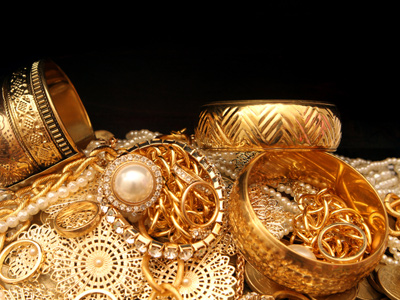In this high school Chemistry quiz we take a look at some of the properties of metals, such as malleability and conductivity. We also find out about how the different properties of metals affect their uses. For example, how the softness and conductivity of copper make it the best material for electric wires.
The majority of the chemical elements are metals and their properties make them incredibly useful. Each metal has its own unique set of properties but there are general properties too, for example, they conduct heat, conduct electricity, are malleable and ductile. In high school, you are expected to be able to link the properties of a metal to its uses, as in the above example with copper. Remember, copper is used for making electrical wires because it is one of the best conductors of electricity and is a soft metal, enabling the wires to be bent to get them into tight spaces. Most of the time, the uses of metals will can be worked out by a common sense application of what you know about the properties of metals in general, so make sure that you revise them. It is also useful to know the properties of certain specific metals like those of group one which react rapidly with water and mercury which is a liquid at room temperature.
The properties of metals come from their structure, their atoms are held together by metallic bonding. The atoms of metals are packed tightly together and as a result, some of the electrons in their outer shell (energy level) become detatched. These are referred to as delocalised electrons as they are then free to move anywhere through the metal instead of being attached locally to a specific ion or atom. The presence of these electrons goes a long way towards explaining why metals behave as they do. Metallic structure is often described as metal ions in a sea of electrons.
Take for example malleability and ductility. The closely packed metal ions are in fact arranged in layers. These layers can slide over each other which allows metals to bend or be pulled into thin wires without breaking. Since the ions are surrounded by a 'sea of electrons' it doesn`'t matter where they are, if they are moved, they will still be in the electron sea. So if we bend a metal, the layers on the outside of the bend will slide over those on the inside of the bend. But they will all be surrounded by the sea of electrons, so the overall structure of the metal will not be affected and it remains intact.
The structure of metals, including the presence of delocalised electrons, makes them good conductors of heat and electricity. Heat is transferred through the metal in two ways. Firstly, heat makes particles of matter vibrate - the more heat, the faster the vibration. Because the ions in a metal are so closely packed, these vibrations are soon passed along a metal from where it is warmer to where it is cooler. Secondly, the electrons will move around faster and they will carry the energy from the heat throughout a piece of metal. By comparison, in non-metals and compounds, the particles are much further apart and electrons are fixed in place. An electrical current is a flow of electrons and since the delocalised electrons are free to move throughout the metal, when you connect it to a power source to make an electrical circuit, the electrons can be 'pumped' through the ciruit.








